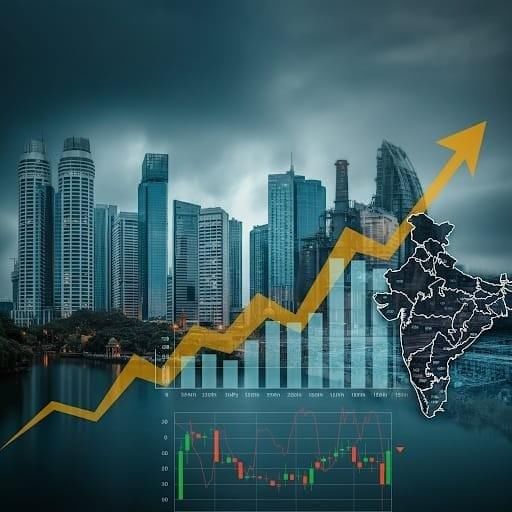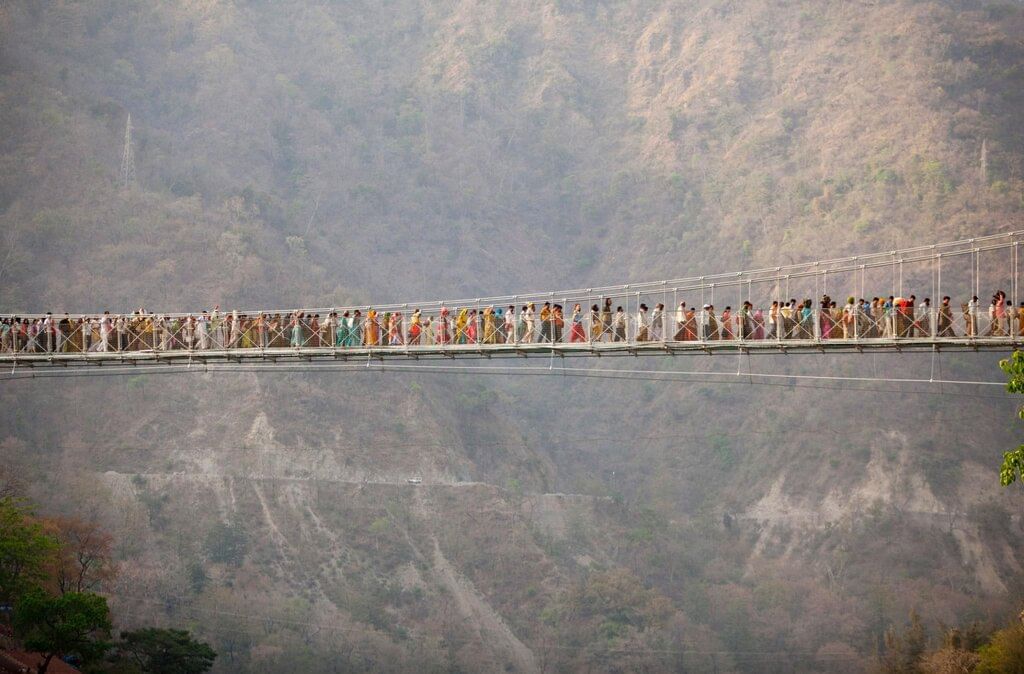UPSC Exam > UPSC Notes > PIB (Press Information Bureau) Summary > PIB Summary - 7th July 2025
PIB Summary - 7th July 2025 | PIB (Press Information Bureau) Summary - UPSC PDF Download
India’s Economic Surge

Overview of India's Economic Performance (2024-25)
Fastest Growing Major Economy. India’s real GDP grew by 6.5% in 2024-25, and this growth is expected to continue into 2025-26.
Global Context. India achieved this growth despite a global slowdown and trade uncertainties.
Macro Stability. The economic stability was supported by strong domestic demand, easing inflation, active capital markets, and export growth.
Robust GDP Growth
- India experienced a 6.5% real GDP growth in 2024-25, with nominal GDP rising by 9.9%.
- The country’s GDP tripled in a decade, increasing from ₹106.57 lakh crore in 2014-15 to ₹331.03 lakh crore in 2024-25.
- This growth was driven by:
- Revival of rural and urban consumption
- Surge in private investment
- High public infrastructure spending
- Global projections for India’s growth in 2025-26 are 6.3-6.4% by the UN and 6.4-6.7% by the CII.
Inflation Under Control
- CPI inflation fell to 2.82% in May 2025, the lowest since February 2019.
- Food inflation dropped to 0.99%, with urban and rural rates being nearly the same.
- The Reserve Bank of India (RBI) anticipates inflation will remain below its 4% target due to good crop yields and lower global commodity prices.
Market Confidence at Record Levels
- Retail investors increased from 4.9 crore in 2019 to 13.2 crore in 2024.
- The IPO market is booming, with 259 IPOs between April and December 2024, a 32.1% increase, and ₹1.54 lakh crore raised, up 190%.
- India’s share in global IPOs reached 30%, the highest worldwide.
- Indian stock markets outperformed other emerging economies, reflecting strong investor trust.
Strengthening External Sector
Foreign Direct Investment (FDI)
- FDI inflows reached USD 81.04 billion in FY 2024-25, a 14% increase year-on-year.
- Top sectors for FDI include:
- Services (19%)
- Software and hardware (16%)
- Trading (8%)
- Manufacturing FDI increased by 18%, while services FDI rose by 40.77%.
Foreign Exchange Reserves
- Foreign exchange reserves stood at USD 697.9 billion in June 2025, covering over 11 months of imports.
- External debt remains at a healthy 19.1% of GDP.
Current Account Balance
- A surplus of USD 13.5 billion (1.3% of GDP) was recorded in the fourth quarter.
- The full-year current account deficit (CAD) was contained at 0.6% of GDP, supported by strong services exports and remittances.
Manufacturing and Export Momentum
- Total exports reached an all-time high of USD 824.9 billion, a 6.01% year-on-year increase.
- Services exports grew by 13.6%, reaching USD 387.5 billion.
- Non-petroleum merchandise exports increased by 6.0%, totaling USD 374.1 billion.
- Significant gains were observed in:
- IT, consulting, and finance
- Machinery, chemicals, electronics, and defense
- Manufacturing Gross Value Added (GVA) grew from ₹15.6 lakh crore in 2013-14 to ₹27.5 lakh crore in 2023-24.
- The sector’s share in the economy remained stable at approximately 17.3%.
Conclusion: India’s Balanced Growth Model
- India is experiencing a unique period of high growth and low inflation, indicating rare macroeconomic stability.
- Investor confidence is at an all-time high, and the resilient external sector enhances global trust in the Indian economy.
- Despite external risks, India is well-positioned as a pillar of global economic growth, with long-term sustainability and inclusive potential.
India’s Story on Bridging Inequality

India: A Leader in Income Equality
- Global Ranking: India stands 4th in the world for income equality, with a Gini Index of 25.5. This places it behind the Slovak Republic (24.1), Slovenia (24.3), and Belarus (24.4).
- Extreme Poverty Reduction: Extreme poverty in India has dramatically decreased to 2.3% in 2022–23, down from 16.2% in 2011–12. This means that 171 million Indians have lifted themselves out of extreme poverty between 2011 and 2023.
Understanding the Gini Index
- The Gini Index measures income inequality, with 0 representing perfect equality and 100 indicating absolute inequality.
- India’s Gini Index improved from 28.8 in 2011 to 25.5 in 2022, showing progress in income equity.
- The index is derived from the Lorenz Curve, which measures the deviation from perfect income equality.
Global Comparison
- India’s Gini Index of 25.5 is lower than that of China (35.7) and the United States (41.8).
- India performs better than all G7 and G20 countries in terms of income inequality, including the UK, Germany, France, Canada, and Japan.
- India is part of a select group of around 30 countries classified as having “moderately low inequality,” with a Gini Index between 25 and 30.
Poverty Reduction and Rising Equality
- The share of the population living on less than $2.15 per day has plummeted from 16.2% in 2011 to 2.3% in 2022–23.
- Under the updated $3 per day poverty line, India’s poverty rate is estimated at 5.3% for 2022–23.
- Both urban and rural poverty have significantly decreased, reflecting the widespread impact of welfare initiatives.
Key Government Interventions Promoting Equality
1. PM Jan Dhan Yojana
- 55.69 crore bank accounts opened (as of June 25, 2025).
- Promotes financial inclusion and access to government benefits.
2. Aadhaar Digital Identity
- Over 142 crore Aadhaar IDs issued.
- Ensures accurate targeting of welfare programs and subsidies.
3. Direct Benefit Transfer (DBT)
- ₹3.48 lakh crore saved by March 2023.
- Reduces leakages and speeds up delivery of benefits.
4. Ayushman Bharat (PM-JAY)
- 41.34 crore Ayushman cards issued.
- Over 32,000 hospitals empanelled.
- Special schemes for senior citizens (e.g., Ayushman Vay Vandana).
- 79 crore+ digital health IDs created through the Ayushman Bharat Digital Mission.
5. Stand-Up India
- ₹62,807 crore disbursed to 2.75 lakh entrepreneurs from SC/ST communities and women.
- Encourages inclusive entrepreneurship and wealth creation.
6. Pradhan Mantri Garib Kalyan Anna Yojana (PMGKAY)
- 80.67 crore beneficiaries (as of December 2024).
- Ensures food security during and post-COVID-19 pandemic.
7. Vishwakarma Yojana
- 29.95 lakh artisans registered (as of July 2025).
- Supports traditional livelihoods through credit, training, and tools.
What Makes India Unique
- India is successfully balancing economic growth with social justice.
- The country combines digital infrastructure, targeted welfare programs, and inclusive credit systems to promote equality.
- Government policies reach the most vulnerable populations while also fostering self-reliance and empowerment.
Conclusion: A Model for Inclusive Growth
- India’s Gini score represents more than just a number; it reflects the transformative impact of well-designed policies.
- The country demonstrates that equality and development can go hand in hand, reinforcing each other.
- India is setting a global standard for integrating economic scale with social fairness.
The document PIB Summary - 7th July 2025 | PIB (Press Information Bureau) Summary - UPSC is a part of the UPSC Course PIB (Press Information Bureau) Summary.
All you need of UPSC at this link: UPSC
FAQs on PIB Summary - 7th July 2025 - PIB (Press Information Bureau) Summary - UPSC
| 1. What are the key factors contributing to India's economic surge? |  |
Ans. India's economic surge can be attributed to several key factors, including demographic dividend, technological advancements, a growing middle class, and economic reforms. The country's young population provides a large workforce, while innovations in technology and digital services have boosted productivity. Additionally, economic liberalization policies have opened up markets and attracted foreign investment, further stimulating growth.
| 2. How does India address income inequality in its economic development? |  |
Ans. India addresses income inequality through various measures such as targeted welfare schemes, inclusive growth policies, and social safety nets. Programs aimed at improving access to education, healthcare, and employment opportunities for marginalized communities are critical. Additionally, the government promotes entrepreneurship and skill development, aiming to uplift lower-income groups and reduce disparities.
| 3. What role do government policies play in bridging inequality in India? |  |
Ans. Government policies are essential in bridging inequality in India. Initiatives like the Mahatma Gandhi National Rural Employment Guarantee Act (MGNREGA) provide guaranteed employment in rural areas, helping to enhance livelihoods. Likewise, direct cash transfer schemes and subsidies aim to support the economically disadvantaged. Such policies ensure that benefits of economic growth reach a broader section of society.
| 4. How has India's economic growth impacted social mobility? |  |
Ans. India's economic growth has positively impacted social mobility by creating new job opportunities and enhancing access to education and resources. As the economy expands, individuals from lower socioeconomic backgrounds can improve their living standards through better employment prospects. However, challenges remain, and sustained efforts are needed to ensure that social mobility is inclusive and equitable across all communities.
| 5. What are the challenges that India faces in maintaining its economic growth while addressing inequality? |  |
Ans. India faces several challenges in maintaining economic growth while addressing inequality. These include the need for sustainable development, ensuring equitable access to resources, and managing regional disparities. Additionally, issues such as corruption, bureaucratic inefficiencies, and inadequate infrastructure can hinder progress. Balancing rapid economic expansion with social equity remains a critical task for policymakers.
Related Searches
















